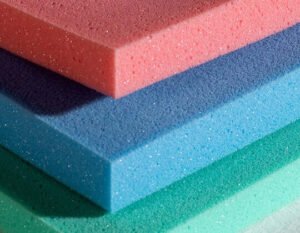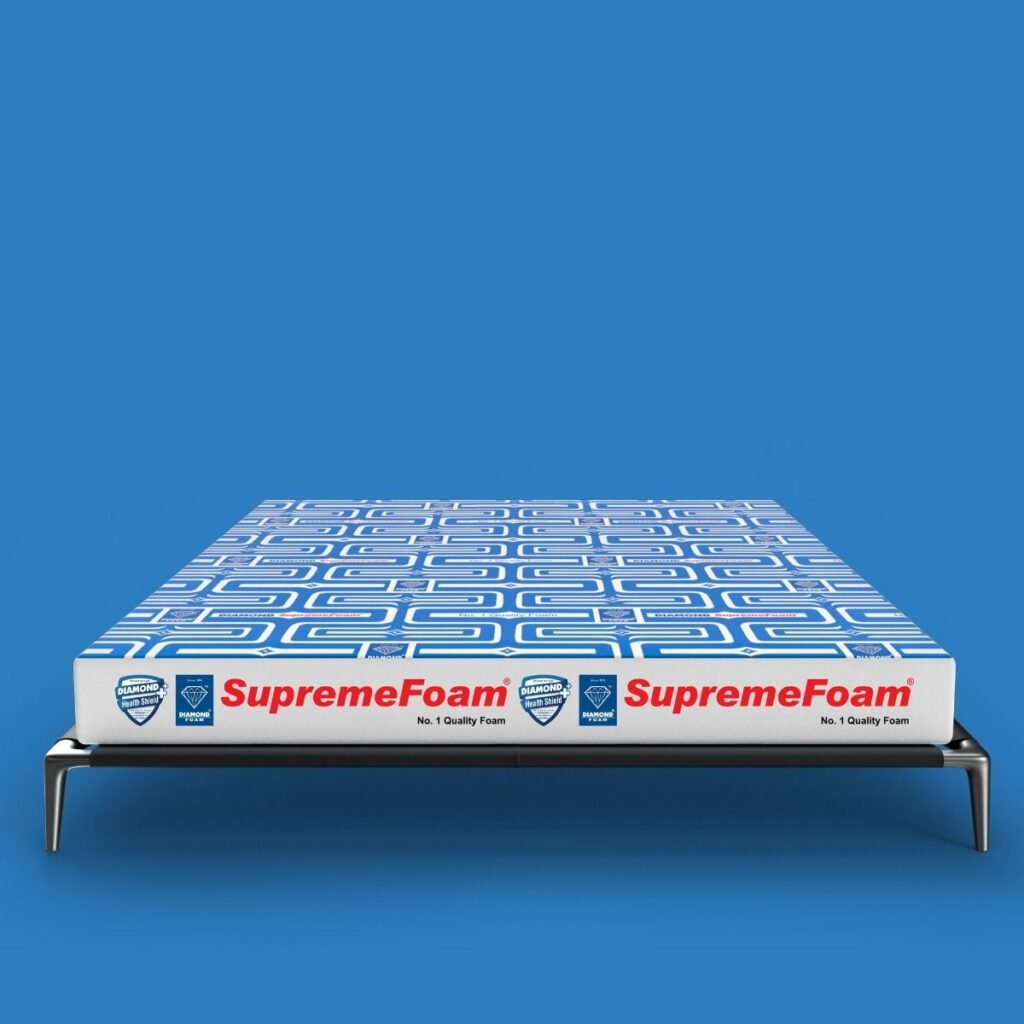You might not think about it much, but foam is everywhere! From the comfy mattress you sleep on to the cozy sofa cushions you relax on; foam plays a silent but vital role in our daily lives. But did you know that not all foam is the same? Just like there are different types of wood or metal, there are many different foam types, each with its own special properties and uses. Understanding these differences can help you make better choices, whether you’re buying a new bed, furnishing your home, or even looking for specialized industrial materials. Let’s explore the diverse and fascinating world of foam types.
Core Foam Types: A Deep Dive
When we talk about foam, we’re generally referring to a cellular material – a spongy material filled with gas pockets. These tiny pockets make foam lightweight and give it its unique characteristics.
Polyurethane Foam (PU Foam / Polyfoam):
Polyurethane foam is one of the most common and versatile foam types in the world. It’s found in a huge variety of products because it can be made in many different densities and firmness levels.

- Conventional Foam: This is your everyday polyurethane foam, widely used in cushioning for furniture and mattresses. It offers good basic support and comfort.
- High Resilience (HR) Foam: As the name suggests, HR foam has higher elasticity and a faster responsive feel. It springs back quickly, making it very durable and long-lasting. It’s a popular choice for high-quality sofa cushions and premium mattresses.
- High Density (HD) Foam: This foam type is defined by its density, measured in pounds per cubic foot (PCF). High-density foam means it has more material packed into it, leading to a firmer, more supportive feel and increased durability. It’s excellent for load-bearing capacity and pressure relief, making it a common choice for orthopedic mattress types.
- Super Soft Foam: At the other end of the firmness spectrum, super soft foam is designed for maximum plush comfort and cushioning, often used in pillow tops or very soft seating.
Memory Foam (Viscoelastic Foam):
Memory foam is famous for its unique ability to contour to your body’s shape. It responds to your body heat and pressure, softening and molding around you, then slowly returning to its original shape once the pressure is removed. This “memory” is what gives it its name.
- Gel-Infused Memory Foam / Gel Foam: A common complaint about traditional memory foam is that it can trap heat. To solve this, manufacturers add cooling properties like gel beads or swirls to the foam. This gel foam helps with heat dissipation and temperature control, offering a cooling comfort that’s great for hot sleepers.
- Open-Cell Memory Foam: Another approach to improving temperature regulation is making the cell size of the foam larger or creating an open-cell structure. This allows for better airflow and ventilation, making the memory foam more breathable and less prone to heat retention.
- Plant-Based Memory Foam / Eco-Friendly Memory Foam: Newer innovations in memory foam involve replacing some petrochemicals with natural oils, making them an eco-friendlier choice.
Memory foam excels at pressure relief and motion isolation, meaning you won’t feel your partner’s movements during the night. It offers a body-hugging comfort that can be very beneficial for spinal alignment and alleviating pain and stiffness, particularly in the neck and back.
Latex Foam:
Latex foam stands out as a more natural material, derived from the sap of rubber trees. It’s known for its distinct elasticity and bounce, offering a responsive yet supportive feel.

- Natural Latex Foam: Made directly from rubber tree sap, this is considered a highly eco-friendly option. It has inherent hypoallergenic properties and resists dust mites and mold naturally.
- Synthetic Latex Foam: Manufactured using petrochemicals, it mimics the properties of natural latex but without the natural origins.
- Blended Latex Foam: A combination of natural and synthetic latex.
Dunlop latex and Talalay latex are two main manufacturing processes for latex foam. Dunlop typically results in a denser, firmer foam type, while Talalay tends to be lighter and more consistent, offering a softer feel.
Latex foam provides excellent pressure relief and support, quickly conforming to your body without the “sinking in” feeling of memory foam. It’s naturally breathable and offers good temperature regulation. Its durability is exceptional, with very long longevity.
Foam Properties & Performance Metrics: Understanding the Science
To truly compare foam types, we need to understand their fundamental properties.
Density & Firmness: The Core of Comfort and Support
- Density: This refers to how much material is packed into a given volume of foam, usually measured in pounds per cubic foot (PCF). Higher density generally means a more durable and supportive foam, regardless of its firmness. For example, a high-density foam mattress will generally last longer and provide better spinal alignment.
- Firmness / Indentation Load Deflection (ILD): This measures how much force it takes to compress a piece of foam by a certain percentage. It’s often expressed as ILD. A higher ILD means the foam is firmer. It’s important to note that you can have high-density foam that is soft, and low-density foam that is firm, depending on its chemical composition. Soft, medium, firm, and extra firm are common firmness levels, directly impacting the load-bearing capacity and pressure relief of the foam.
Temperature Regulation: Staying Cool or Warm
- Breathability / Airflow / Ventilation: Crucial for comfort, especially in warmer climates. Open-cell foam types and those with gel infusions or special designs allow for better airflow, helping to dissipate heat and prevent heat retention.
- Cooling properties / Temperature control: Some foams, like gel-infused memory foam and natural latex foam, are designed specifically to offer cooling properties and help with temperature control, preventing discomfort from heat during sleep.
Durability & Longevity: Investing for the Long Term
- Durability: How well a foam can withstand repeated use without breaking down.
- Longevity: The expected lifespan of the foam product. High-density foams and latex foam generally offer superior longevity.
Choosing the Right Foam Type for Your Needs
With such a wide array of foam types available, how do you decide what’s best for you? Consider your primary need:

- For a Mattress: Are you a hot sleeper? Consider gel-infused memory foam or latex foam for cooling properties. Do you need extreme pressure relief and motion isolation? Memory foam is excellent. Do you prefer a responsive feel with natural bounce and superior durability? Latex foam is a great choice. For balanced support and value, high resilience (HR) foam is often utilized by reputable mattress brands, offering excellent longevity. In Pakistan, brands like Diamond Supreme Foam offer mattresses incorporating various foam technologies to cater to diverse comfort and support requirements.
- For a Pillow: If you have neck pain relief needs, an orthopedic foam pillow made of memory foam or latex foam can provide crucial neck support. For a cooling pillow, look for gel-infused options.
- For Furniture: For sofa cushions that will withstand daily use and maintain their shape, high-density (HD) polyurethane foam or HR foam is ideal due to its durability and load-bearing capacity.
- For Specialized Uses: If you need soundproofing, look for acoustic foam. For packaging, polyethylene foam offers robust shock absorption.
Leading foam manufacturers, including those prominent in Pakistan like Supreme Foam, strive to integrate various foam types and their specific properties into their products to provide tailored solutions for ultimate comfort and support. Their commitment to using high-quality foam ensures that products deliver on their promise of improved sleep quality and overall wellness.
Conclusion:
The world of foam types is incredibly diverse, offering specialized solutions for almost every need. From the soft support of a super soft foam to the rigid protection of closed-cell polyethylene foam, each foam type plays a vital role. Understanding their properties – like density, firmness, temperature regulation, and durability – empowers you to make informed decisions for your home, comfort, and industrial applications.
Remember, whether it’s a mattress designed for spinal alignment or cushioning for your favorite armchair, the type of foam used makes all the difference. When you choose foam products, opting for quality and suitability to your needs, perhaps from trusted brands in Pakistan like Diamond Supreme Foam, will lead to a life of comfort and quality.

